The site of the Palumbo Recreation Center is the first example of what will be a recurring theme for the Delorean Time Machine: places where Philadelphians used to be buried. Today, Palumbo’s sprawling fields, baseball diamond, playground and basketball courts occupy the full block between Bainbridge, Fitzwater and 9th, and 10th Streets.
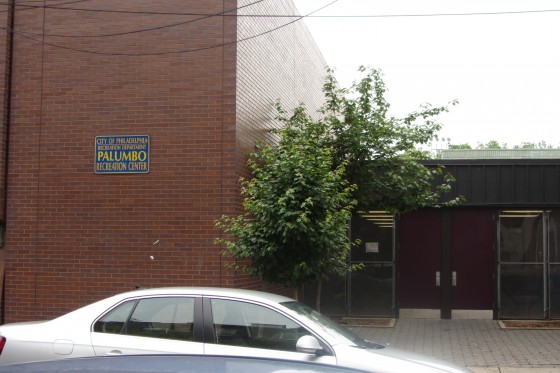
Rec center
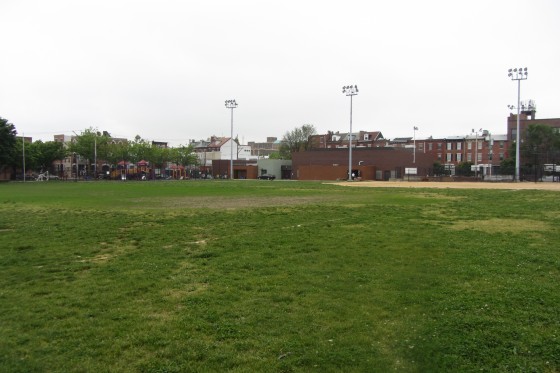
Ball fields
However, as these images taken from the Works Progress Administration’s 1942 and 1962 Land Use Maps show, this grass lot was once hallowed ground. According to an article by Joseph T. Reichwein, originally culled from the Philadelphia Bulletin (probably around 1950), Ronaldson Cemetery was established in the park’s current location back in 1827.
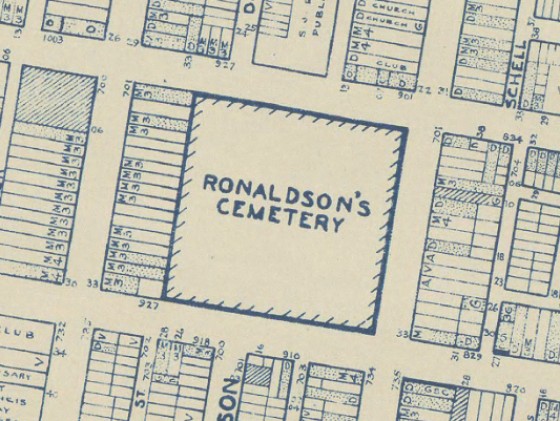
In 1942

A change by 1962
According to Find a Grave, type-foundry owner James Ronaldson pioneered the then completely novel idea of a private non-sectarian burial ground for those that could not be interred at a church yard (often for reasons of cost or irreligious personage) but who also wished to avoid burial on public grounds where the risk of removal was high. Ronaldson’s project was met with hostility in its time, both from the neighborhood, which didn’t relish a cemetery in its midst, and from the churches, which didn’t care for the competition. But its humanitarian premise and financial accessibility would prevail for a time, with the cemetery eventually reaching a capacity of 13,500 long-term residents. Ronaldson, also the founder of the Southwark Soup Society and first president of The Franklin Institute, would be buried in his own cemetery in 1841.
By the start of the 20th century, however, the cemetery had taken on the complexion of its surrounding neighborhood. That is, it was covered in refuse. In the 1924 photo here, taken from Thomas H. Keels’ Philadelphia Graveyards and Cemeteries, Mayor W. Freeland Kendrick and then city council president Charles Hall inspect the grounds. Presumably, they didn’t like what they saw.
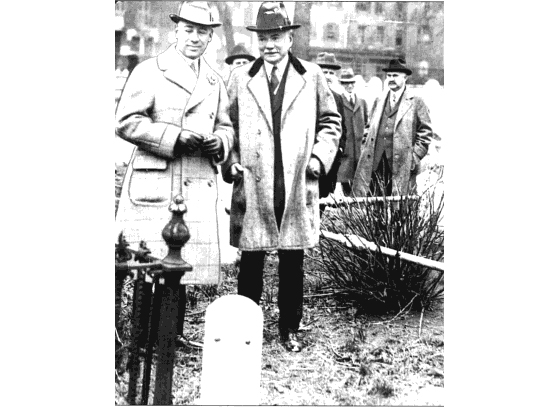
They look a little nonplussed
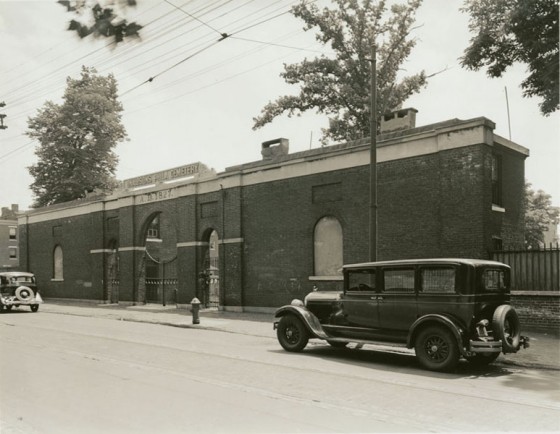
Bainbridge St. entrance in 1949
The gatehouse on Bainbridge, shown above in a 1949 photo courtesy of Philadelphia Speaks, would be dismantled the year after the photo was snapped. By 1950, the dwellers at Ronaldson’s were relocated to a mass grave in Forest Hills, in Somerton. Some of the cemetery’s more distinguished occupants, including several Revolutionary War soldiers, were moved to the Old Swedes Church graveyard in Queen Village.
–David Tomar
